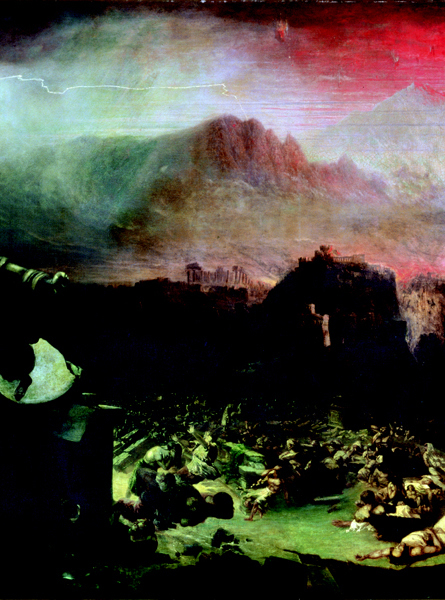Image Details

Photo by the York City Gallery, North Yorkshire, UK/Bridgeman Art Library
The horror of Armageddon is rendered in garish greens and blood-red tones by the 19th-century painter Joseph Pettit. In the battle’s aftermath, bodies lie strewn across a plain that has been shattered by an earthquake, and a statue topples in the foreground of a ruined city. Although the scene as Pettit conceives it may not resemble the actual topography of Armageddon, or the Mount of Megiddo, in northern Israel (see photo of mound of Megiddo), author Eric Cline explains why John, when composing the Book of Revelation in the late first century A.D., would have considered Megiddo a logical site for a dramatic end-time confrontation between the forces of good and evil.
Not only has Megiddo been the scene of countless bloody conflicts over the centuries, but in John’s day the site was indelibly associated with the fall of the House of David. For it was at Megiddo in 609 B.C. that Josiah, the great reformer and king of Judah, had his fatal confrontation with Pharaoh Necho II, thereby effectively bringing to an end the era when the Davidic line exercised independent royal power.
By setting the crucial eschatological conflict at Megiddo, John expresses his confident expectation that God will one day reverse the results of Josiah’s dire encounter with Egypt. By routing the forces aligned with the Antichrist at Armageddon, the Messiah will restore the Davidic line and will establish a new kingdom of God on earth
